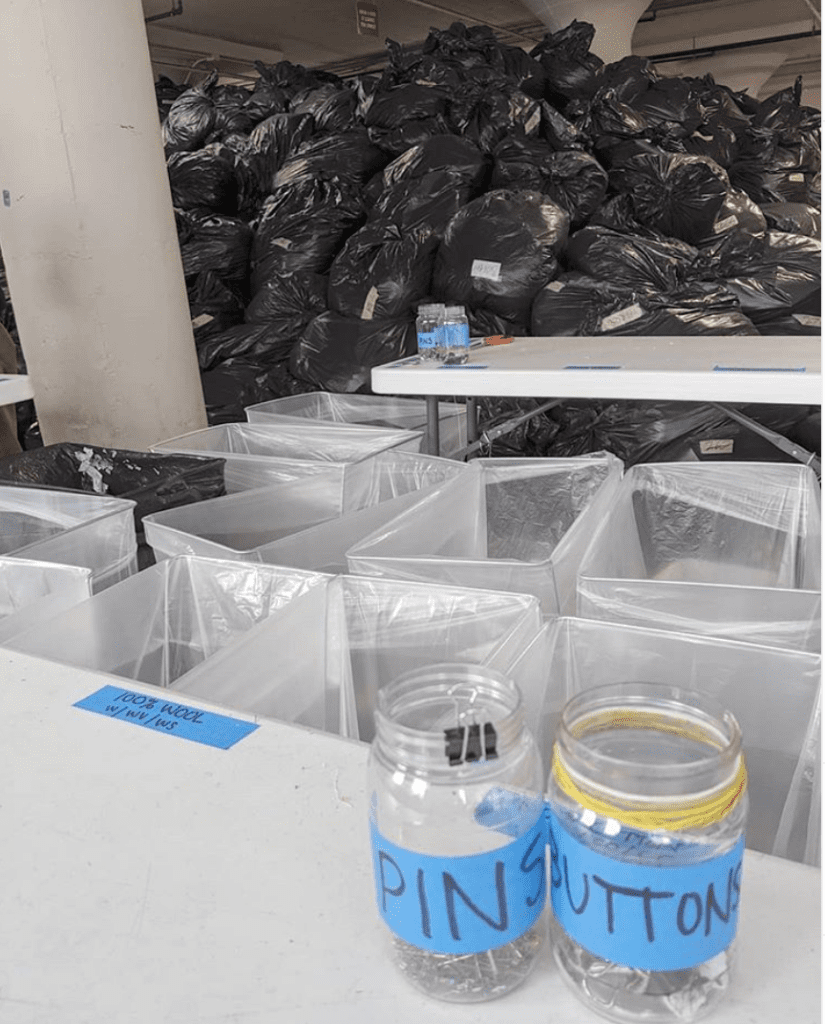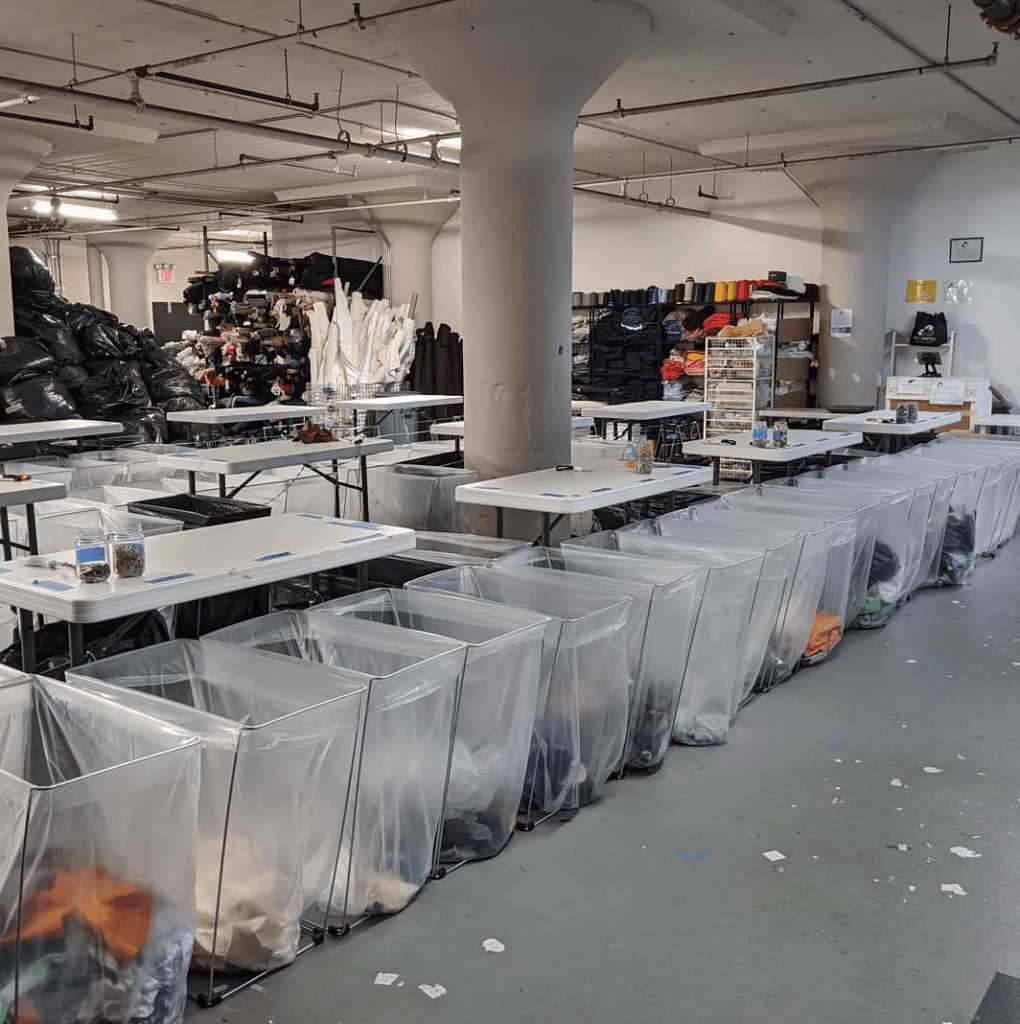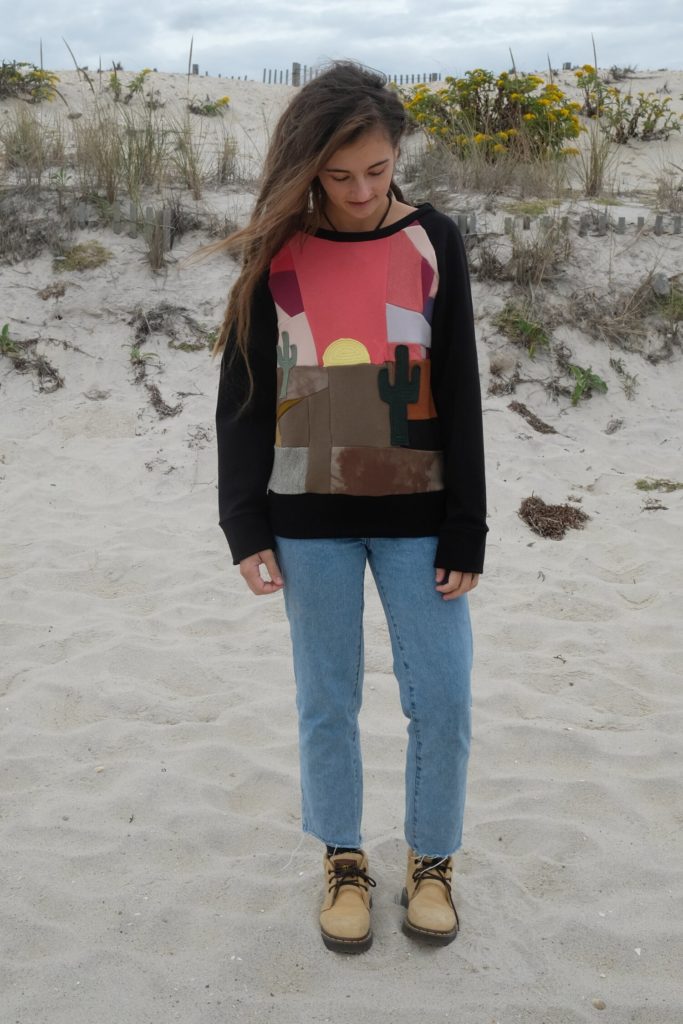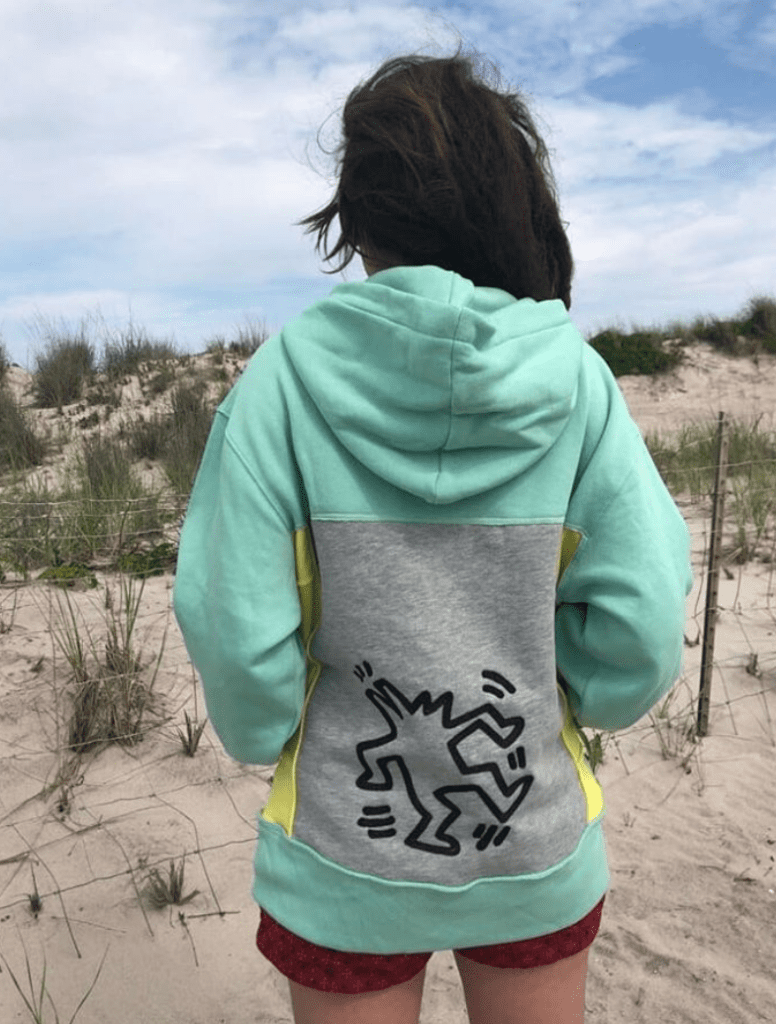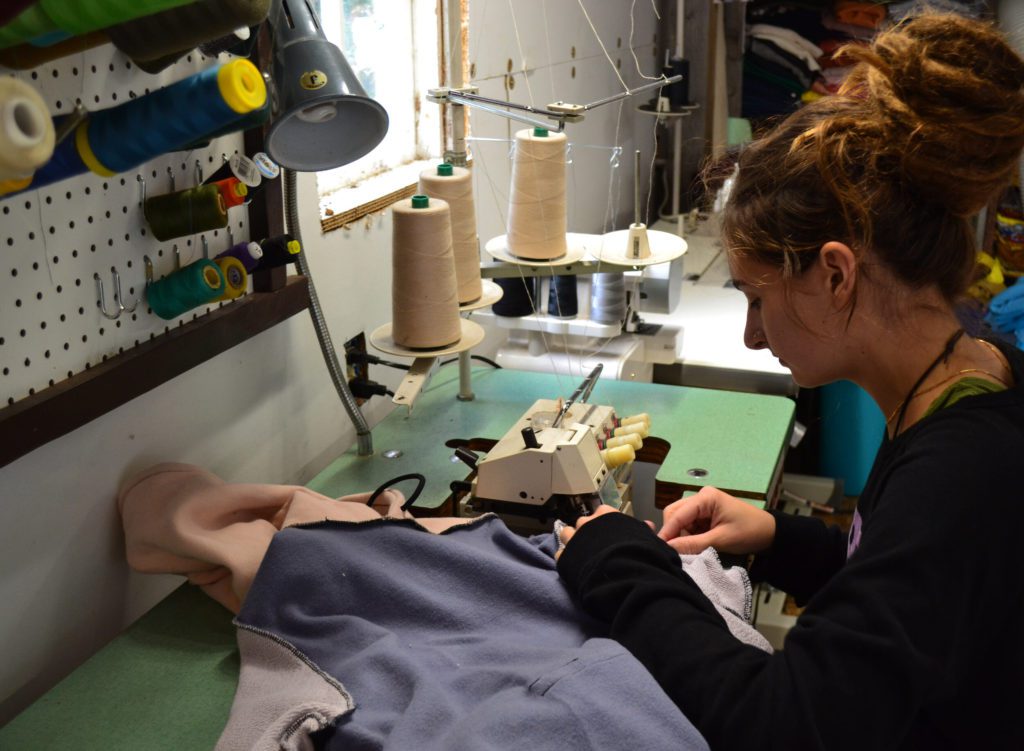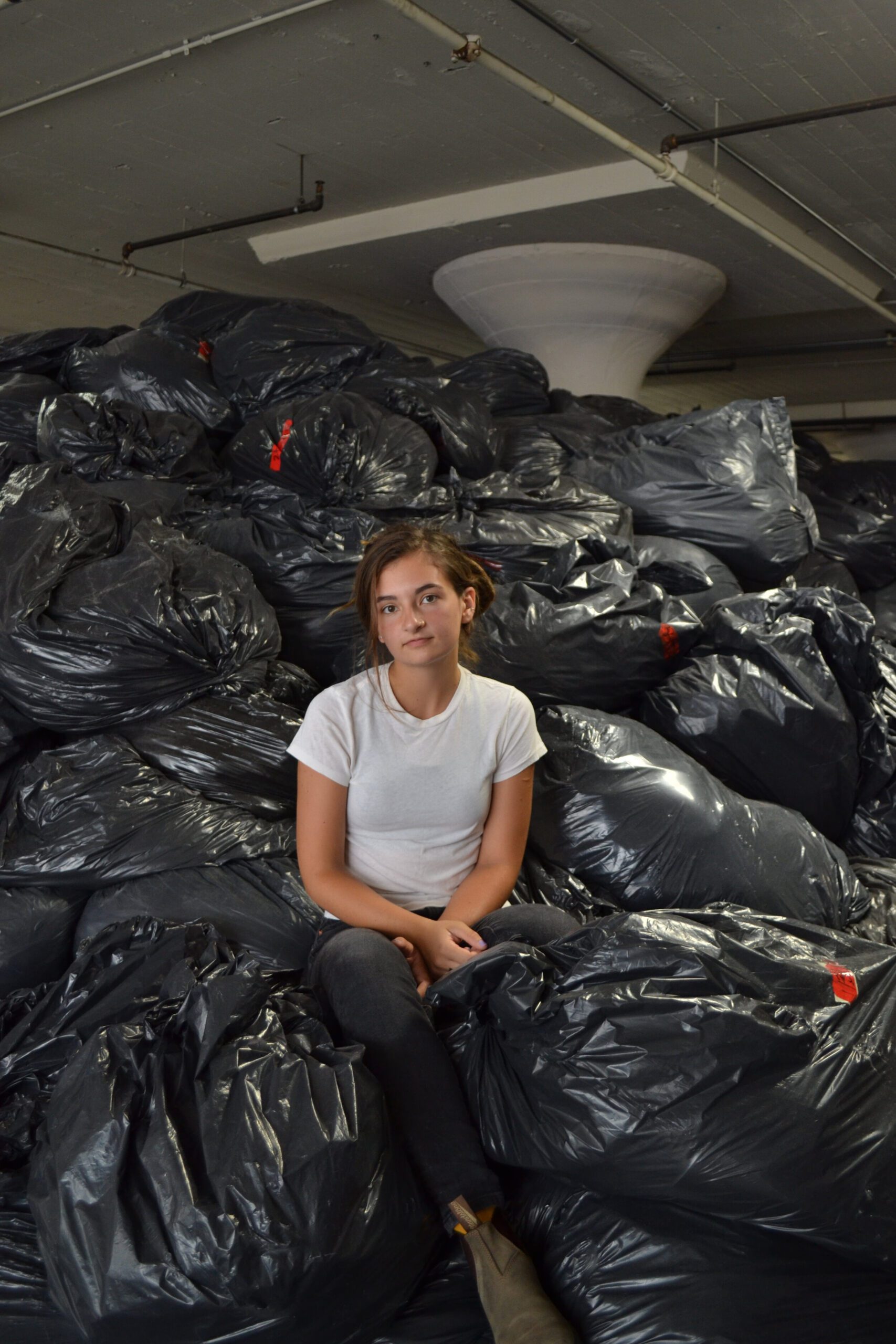
Rags to Riches: How Textile Waste is Turned into Sustainable Clothing
Emily Keller is a graduate of Fashion Institute of Technology who majored in fashion design, she designs and produces garments herself. However, the materials she used are unlike the norm: they are sourced from fashion companies’ textile waste bins.
Growing up in rural Michigan with a constant love for nature and exploring, Emily is more sensitive about the protection of the environment and sustainability than others are. After working for several sustainable design brands, Emily discovered FABSCRAP, a non-profit organization that diverts textile waste from landfills. Fabric swatches, sample garments and hardware all arrive at the FABSCRAP warehouse, volunteers sort out fabrics based on the size and fiber content. Large yardages of fabrics are usually resold at affordable prices while small pieces of fabric are sorted, then processed to be made into new fabric instead of ending up in landfill. “I fell in love with their mission, the small startup team and the reality that it was possible to create sustainably by using the fashion industries ‘trash’.” Says Emily. Volunteering with FABSCRAP soon evolved into interning, then being hired as a part of the team after she graduated.
FAB SCRAP’s sorting tables
https://www.instagram.com/fab_scrap/
As an incoming materials manager, Emily is responsible for all the textile waste coming in from NYC design houses, which could range from 5000-10000 pounds of textile waste per week. Emily records all date for each bag that came in for FABSCRAP’s annual reports back to each partner brand, then sets up the sorting tables for the volunteers. According to Emily, the most interesting thing is sorting through the bags of textile waste. “I often discover many amazing, interesting and bizarre things that came in the bags of textile waste. The best thing was a latest generation iPhone, we even contacted the brand to make sure that it wasn’t accidentally thrown out.” Working at FABSCRAP, Emily realized that the textile waste produced during design process is immense, especially with fast fashion companies. For part of the research and development, fashion brands buy other designers clothing to either copy the pattern, material and color or simply for inspiration. Some fashion houses would toss away unworn designer garments which were bought for reference or mutilated garments which were, under most circumstances, still wearable but in need of repairs, usually with the tag on. Emily started gathering those mutilated garments and repaired them with the skills she learnt. At first, she did it for fun; but when she started to post her creations online, a lot of people expressed interest. Emily realized that it would be a good opportunity to start her own clothing brand, in order to promote sustainable clothing and make a change in the fashion industry. When designers are creating garments with purchased fabrics, there is usually leftover yardage which isn’t enough for another garment; If it isn’t used elsewhere in the collection, it will unfortunately be discarded. With Emily’s creation process though, no extra textile waste will be generated. According to Emily, she likes to take the process as a challenge and silent protest against textile waste generated during design and production.
Example of Emily’s recreations
https://emmykapparel.com/shop/desert-sweatshirt
Emily’s methods include patchwork, embroidery and fabric manipulations, she re-purposes each mutilated garment based on its style and function. Even most of the materials she uses for recreation comes from the recycled textile bins at FABSCRAP. “My favorite reworked creation is probably an Acne Studios hoodie that had the back cut up. I recreated the back with a Keith Herring embroidery of a dancing dog I had also found thrown out,” states Emily, “I also recently recreated a Helmut Lang sweatshirt with a $395 tag still attached. Pretty wild.”.
Acne Studios X Keith Herring hoodie recreated by Emily, photographed by Laura Cervini
https://www.instagram.com/p/Bzot6DXhmZ3/
The pandemic impacted a lot of global fashion businesses, since most mass production is done by manufacturers overseas. However, it brings a light to local businesses that produce small. Consumers have the chance to purchase from independent designers and at the same time, rethink their shopping choices. It is obvious that global climate change is getting more and more serious in the recent years. Climate change is not only a threat to the environment, but also a threat to human life. Fortunately, many designers are taking sustainability as a serious factor for consideration during design processes, including sourcing recycled materials and producing less units. Emily thinks that sustainability is a very important factor for brands to consider; Not only for the benefit of the earth, but also to cater to consumers who are part of a society that is becoming more eco-conscious.
Emily hopes to positively educate others about the fashion industry’s problems through her recreations and designs, she also plans to continue diverting textile waste from landfills. “I have a lot of dreams, ” Emily says, “they all include growth, happiness and basically doing all I can to impact the world in positive ways.”
Emily at work, photo provided by Emily Keller



